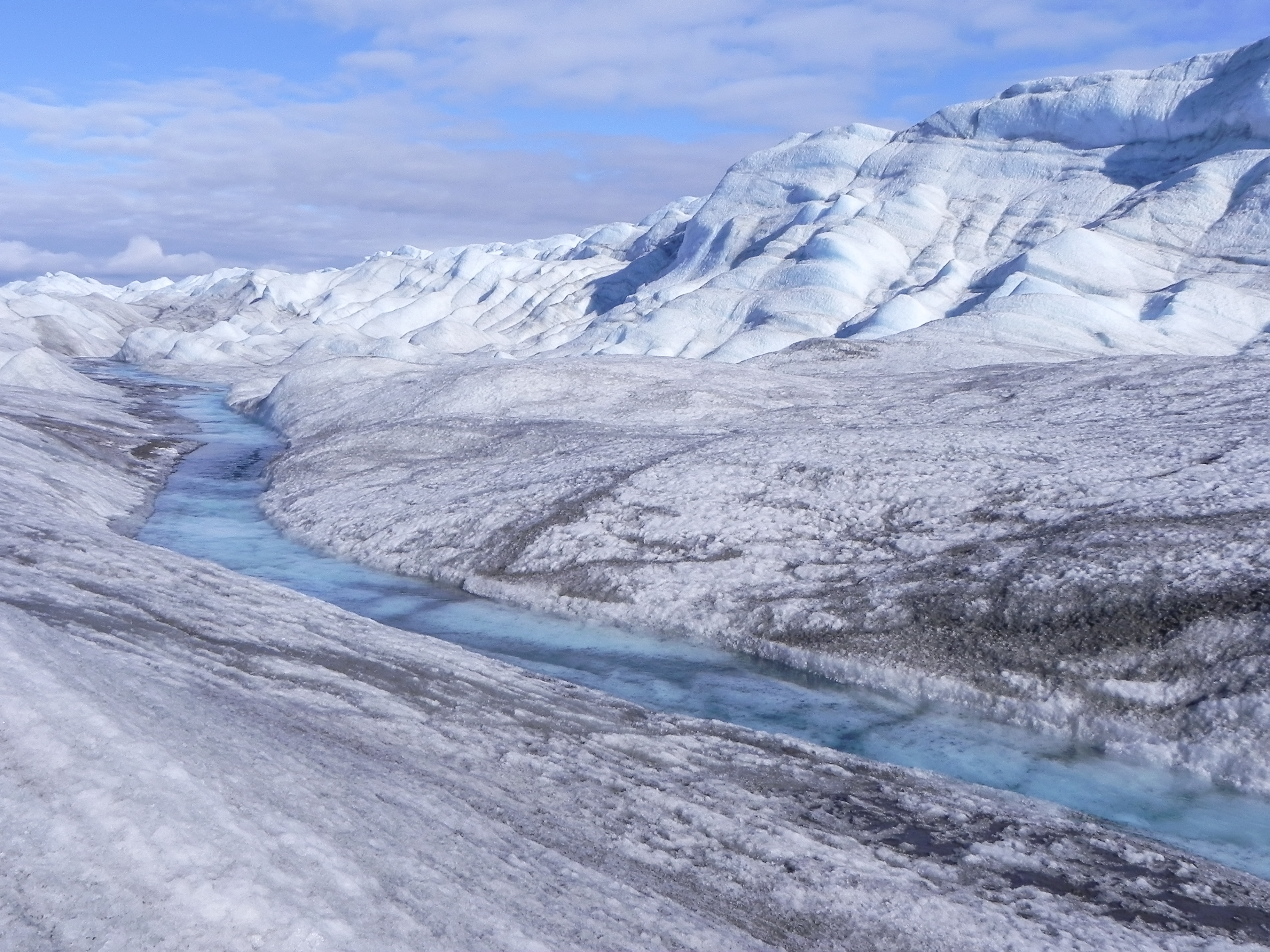Industrial pollution might be a lot more widespread in Greenland’s ice sheet than we thought

Industrial contaminants may be prevalent enough in Greenland’s ice sheet to have influenced the genomes of microbes that live there, causing them to evolve the ability to break down those contaminants, a new study has found.
Past research has shown that the Greenland ice sheet contains traces of contaminants deposited since the 1850s, including black carbon. But a new study Tuesday, which looked at microbial communities in the ice sheet, suggests that there are other pollutants present, too.
Researchers lead by Aviaja Hauptmann from the University of Greenland collected samples of cryoconite, a dust that settles and accumulates on glaciers or ice caps, from five different locations on the island between May and September 2013. Looking at the microbial communities in these samples, the team found they had specific genes that suggest exposure to four contaminants: polychlorinated biphenyls (PCBs), polycyclic aromatic hydrocarbons (PAHs), mercury and lead.
Some microbes in the sample had the ability to break down PCBs and PAHs, thanks to genes that have evolved to do so. The study found this genetic evidence of exposure to toxic substances in several areas, including some far from any site associated with human activity.
Contaminants from around the world accumulate in the Arctic, where — in part because they break down less easily in colder temperatures — they can become trapped in the snow and ice.
[The Arctic is full of mercury, and scientists think they know how it’s getting there]
“It makes complete sense to me that the Greenland ice sheet would collect contaminants such as PAHs and PCBs — in fact, the ice is probably a pretty good archive of how transport from lower latitudes has evolved over the last century,” Robert Newton, an oceanographer at Columbia University’s Lamont-Doherty Earth Observatory, wrote in an email.
More melting can drive up local levels of contaminants, the study’s authors wrote, and Greenland’s ice sheet — like most ice sheets and glaciers in the Arctic — has been shrinking in recent decades.
While it might sound like good news that bacteria have evolved to break down toxic substances such as PCBs and PAHs, Hauptmann cautioned that the byproducts of the degradation might not be favorable either.
“For some specific contaminants, this might result in less toxic byproducts. However, for other contaminants, degradation of that contaminant might result in equally or more toxic byproducts, which is not a good thing,” Hauptmann wrote in an email.
With these results, the researchers wrote that, from a microbial perspective, “the Greenland ice sheet cannot be seen as a pristine environment.”
Eric Collins, an assistant professor at the University of Alaska Fairbanks specializing in marine microbiology, had some qualms with this definition, pointing out that there was no control in the study defining what constitutes a “pristine environment.” While there are regulatory definitions to define what is contaminated and what is not, he said, such a definition is harder to come by in microbiology.
“The definition [of contamination] they use here is broader — any evidence of human impact,” said Collins in a phone interview. “That is a much lower bar because there is nowhere on Earth that doesn’t have evidence of human impacts.”
Still, he said that there is a reasonable worry of bioaccumulation of these toxins in the food web — something that the Environmental Protection Agency doesn’t account for when defining a contaminated area.
Going forward, Hauptmann would like to collect more data to determine the extent to which Greenland ice sheet is contaminated by these toxic compounds — and what ecological effects they might have.
“The indications from our study certainly makes it highly relevant to start assessing how high the contamination level is and what impact the melting of the ice will have on downstream ecosystems,” Hauptmann wrote in an email.